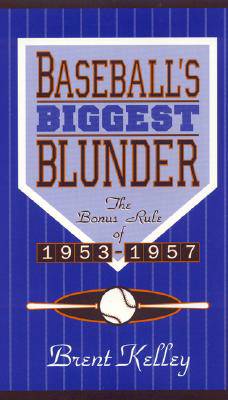
- Afhalen na 1 uur in een winkel met voorraad
- Gratis thuislevering in België vanaf € 30
- Ruim aanbod met 7 miljoen producten
- Afhalen na 1 uur in een winkel met voorraad
- Gratis thuislevering in België vanaf € 30
- Ruim aanbod met 7 miljoen producten
Zoeken
Omschrijving
The "bonus rule" of 1953-1957 required players who signed a baseball contract for more than $4,000 to remain on the major league roster for two full seasons. These were the bonus babies--young men of about 18 or 19 years old, so full of promise and talent that they overshadowed their high school or collegiate teammates and had professional teams scrambling to sign them. This system produced three members of the Baseball Hall of Fame (Al Kaline, Harmon Killebrew, and Sandy Koufax) and several other long-time performers, but the "bonus rule" was also responsible for the destruction of many potential careers. In two years or less, professional baseball lost the likes of John Edelman, Bruce Swango, and Paul Martin. Kelley tells the story of the rule and the players involved, using the files of the National Baseball Library as well as interviews with many of the bonus babies themselves and other players, managers, and baseball executives of the day. He also provides a brief history of bonuses and explains how this rule led to the free agent draft in effect today. Photos.
Specificaties
Betrokkenen
- Auteur(s):
- Uitgeverij:
Inhoud
- Aantal bladzijden:
- 256
- Taal:
- Engels
- Reeks:
- Reeksnummer:
- nr. 6
Eigenschappen
- Productcode (EAN):
- 9780810830493
- Verschijningsdatum:
- 30/12/1996
- Uitvoering:
- Hardcover
- Formaat:
- Genaaid
- Afmetingen:
- 146 mm x 223 mm
- Gewicht:
- 362 g

Alleen bij Standaard Boekhandel
+ 181 punten op je klantenkaart van Standaard Boekhandel
Beoordelingen
We publiceren alleen reviews die voldoen aan de voorwaarden voor reviews. Bekijk onze voorwaarden voor reviews.











